Module 7: African Kingdoms: Ethiopia and Benin
1/17
There's no tags or description
Looks like no tags are added yet.
Name | Mastery | Learn | Test | Matching | Spaced |
|---|
No study sessions yet.
18 Terms
Lost-wax method
(French word: cire-perdue) bronze casting
A technique for casting a metal sculpture in which a model of the sculpture is first made from wax. The model is used to make a mold, and the wax is melted out, leaving the mold ready for casting the sculpture. There are two variations on this technique: direct lost-wax casting and indirect lost-wax casting
creating in wax
spruing the wax
the mold
burnout
casting
finishing
Oba
Sacred king of the Benin Kingdom who acted as both a spiritual leader and a political ruler.
Iyoba
Queen mother of the Benin Kingdom, serving as a crucial advisor and influence in royal matters.
Ikegobo
Altar to the Hand (marker of accomplishment) in the Benin Kingdom, symbolizing achievements and honoring the hands that crafted the kingdom's art and culture.
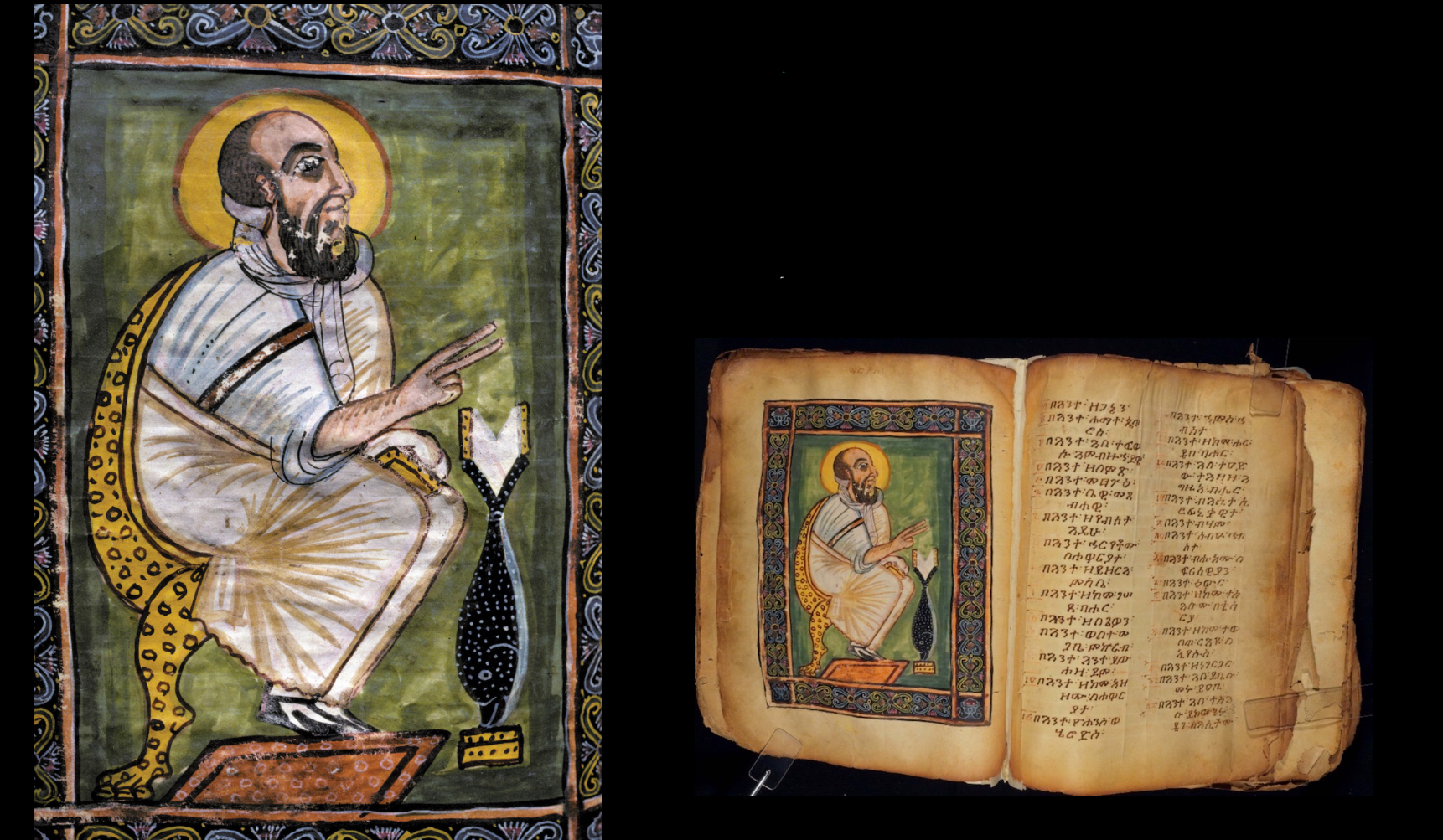
Garima Gospels, Portrait of St.Mark, manuscript, Aksumite kingdom, Ethiopia, 4th-6th centuries CE (Africa)
may be the earliest surviving illuminated Gospel books
Predates mediterranean surviving illuminated manuscripts
written in Ge’ez
seeing anionic and iconic imagery
own artistic techniques and ideals outside of Europe (shows very little trading)
similar to the Byzantine Era
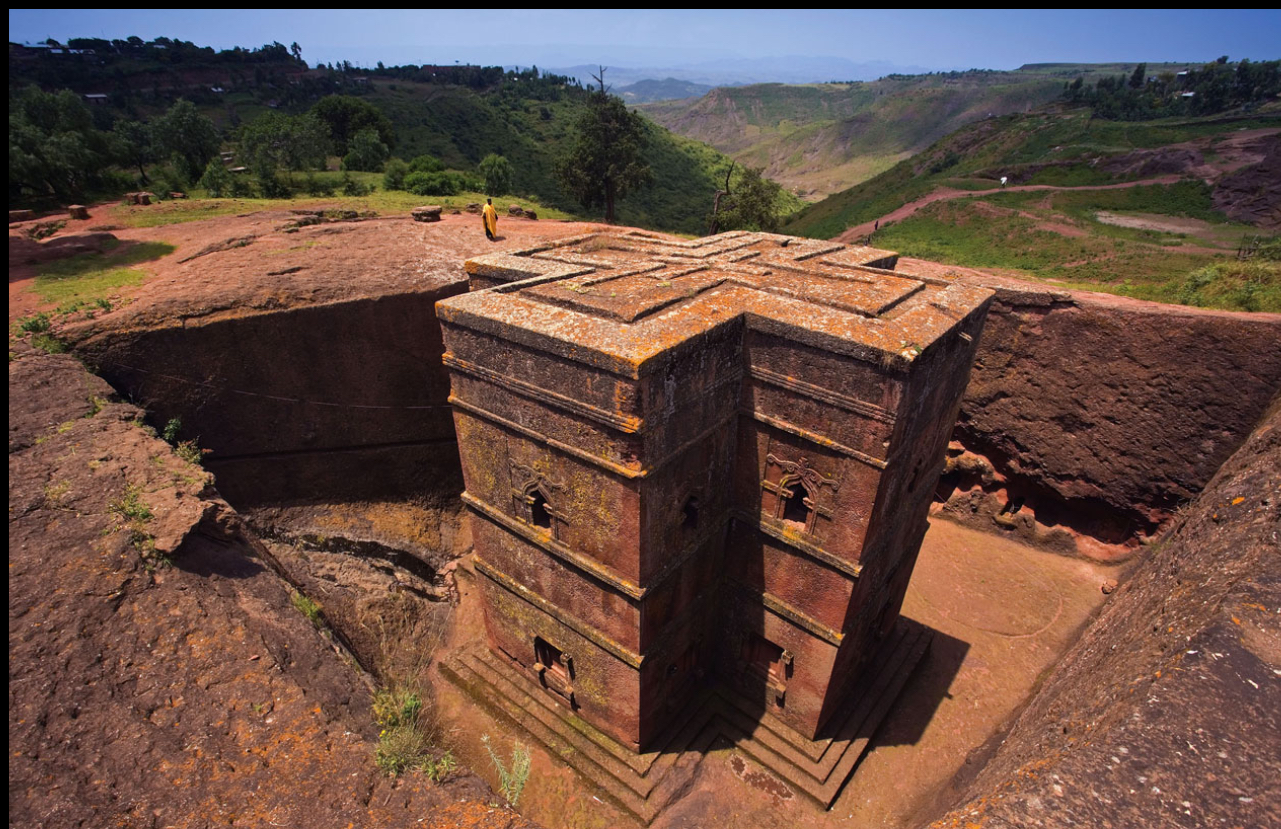
Rock-cut church of St.George, Lalibela, Ethiopia, 12th-14th centuries CE (Africa)
was built to be an alternative pilgrimage site
made out of volcanic rock
had trenches that allowed pilgrims to walk from church to church
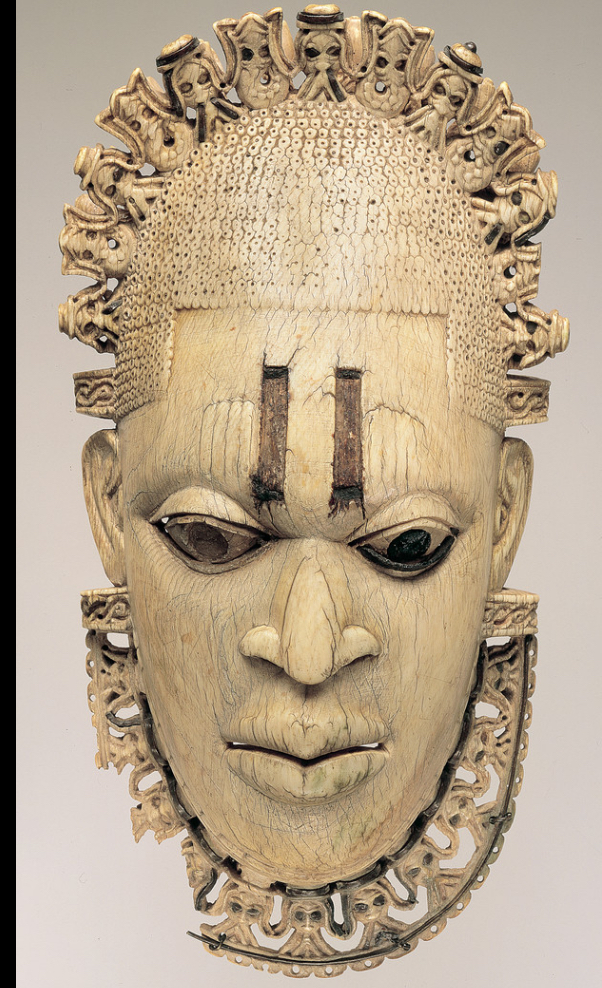
Ivory waist pendant of Queen Mother Idia, Benin, Nigeria, 16th century (Africa)
made out of ivory
Speaks to Idia’s authority and mystical powers
This also carries reminders of their relationships with the Portuguese
The bearded figures represent the portuguese
She’s wearing a large amount of coral beads, which had to be imported; it’s a symbol of high status
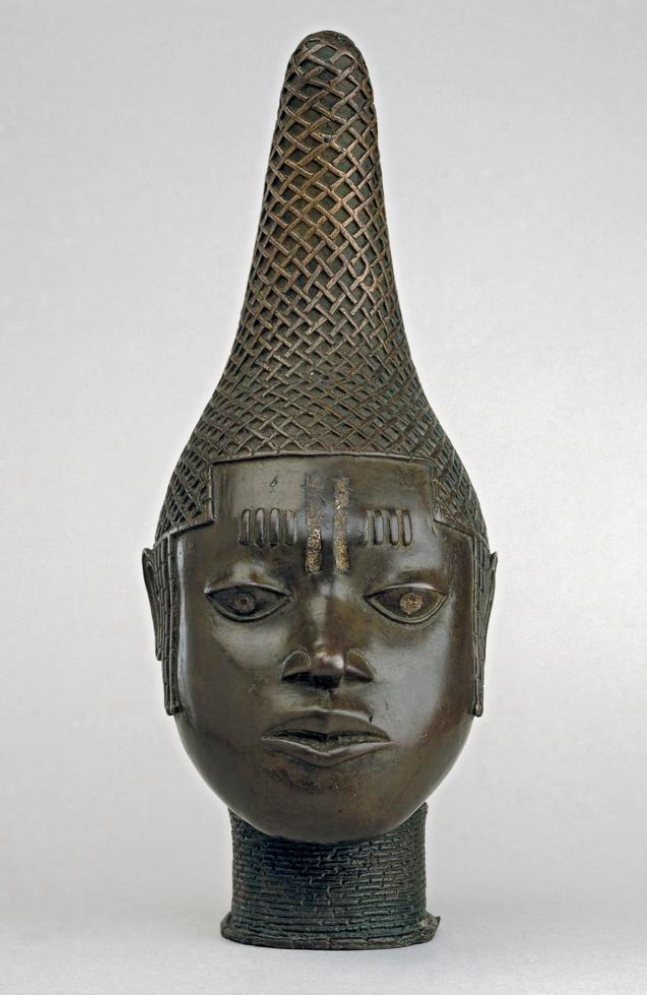
Commemorative head of Queen Mother Idia, Benin, Nigeria, 16th century (Africa)
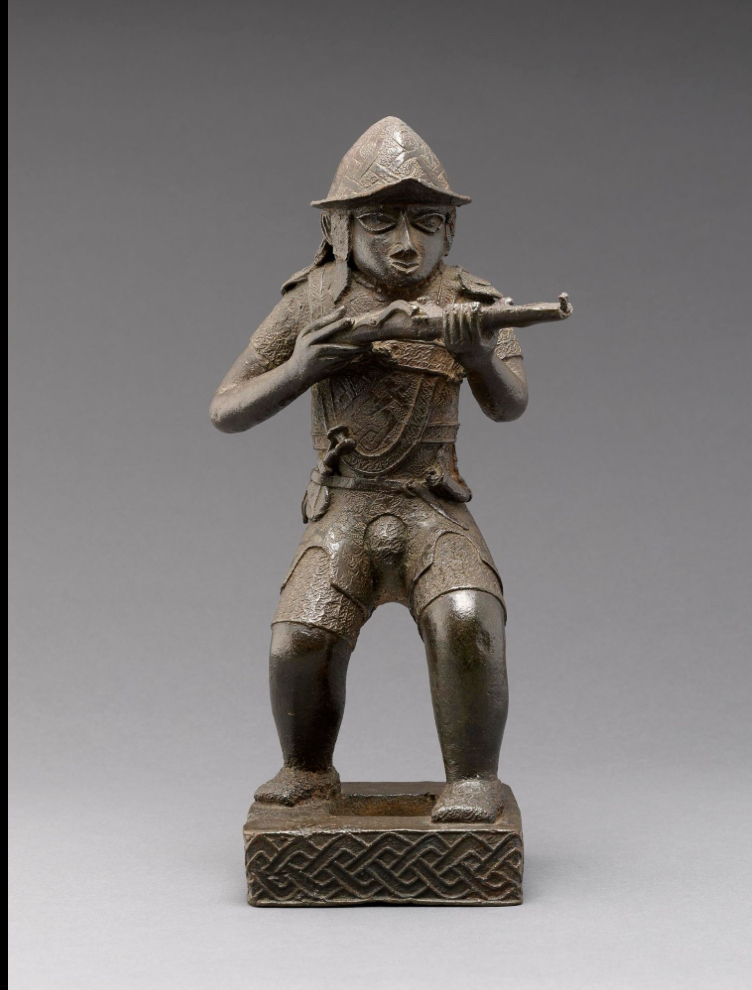
Portuguese Solider, Benin, Nigeria, bronze 16th century (Africa)
made using the los-wax casting method
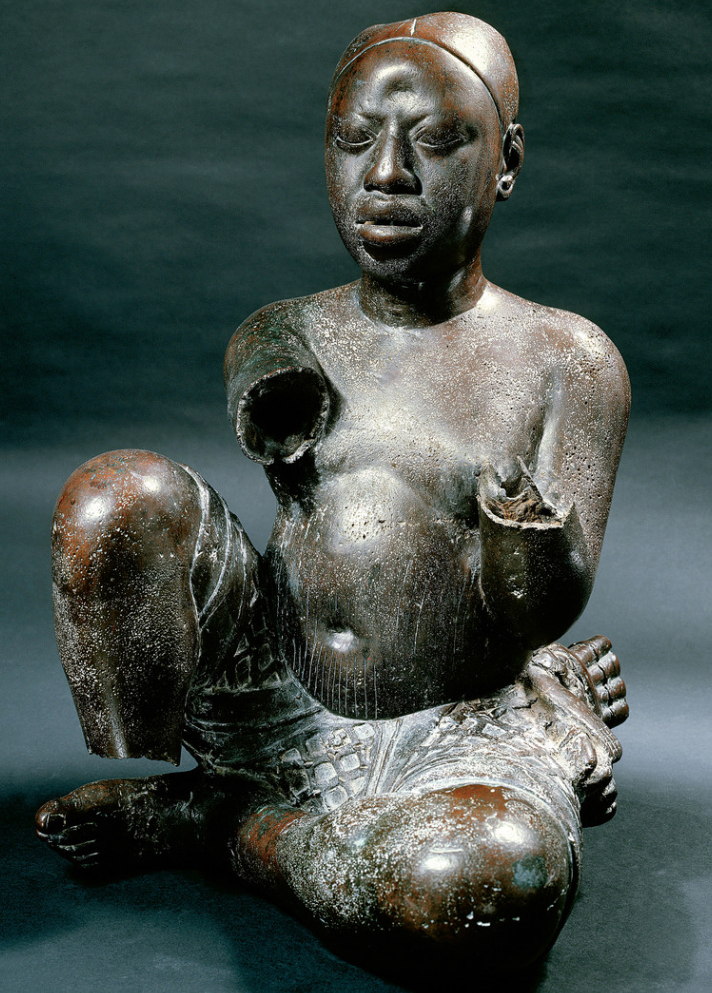
Seated figure, probably Ife culture, found in Tada, Nigeria, copper, tin, and arsenic, 13th-14th centuries CE (Africa)
naturalistic, very relaxed
Ife culture probably made it
very lively
damaged
it’s hollow used the technique of lost-wax casting method
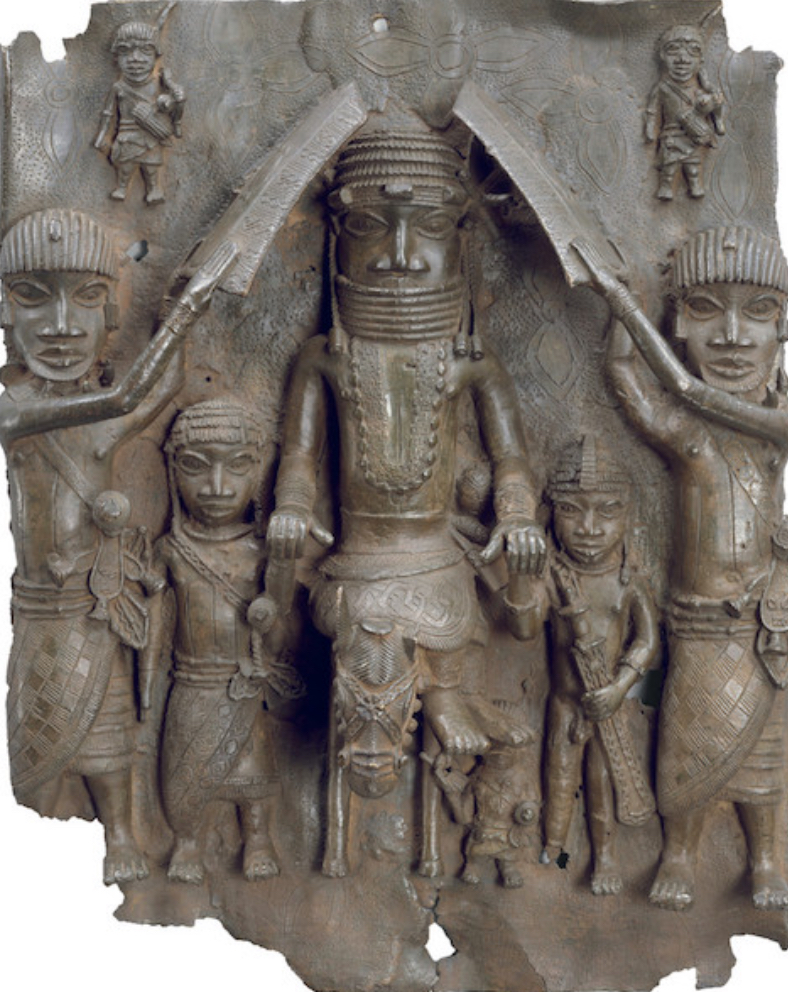
Oba plaque, Benin, Nigeria, bronze 16th century (Africa)
Oba=king
hierarchy of scale w the king is shown
The more important it is the bigger it is like with the oba or the head
the kings face is almost covered w the strings of coral, coral is a sign of status as well as contact with Europeans
Equestrian portrait
The Oba is ridding the horse
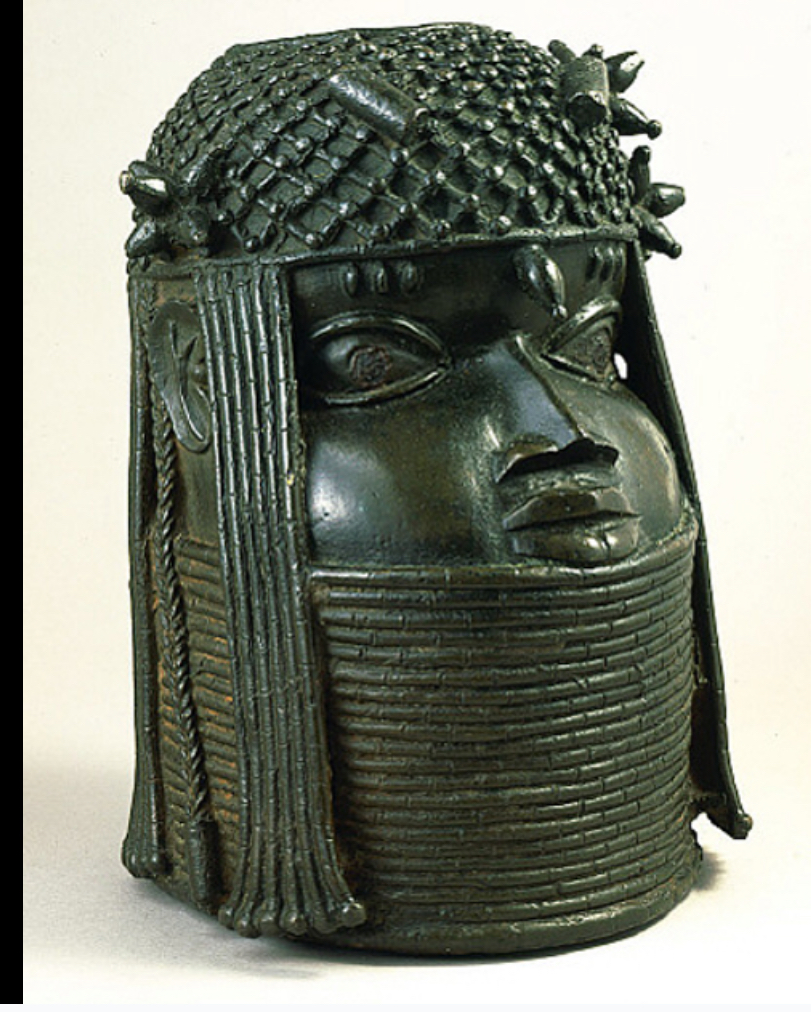
Memorial head of an Oba, Benin, Nigeria, 17th century (Africa)
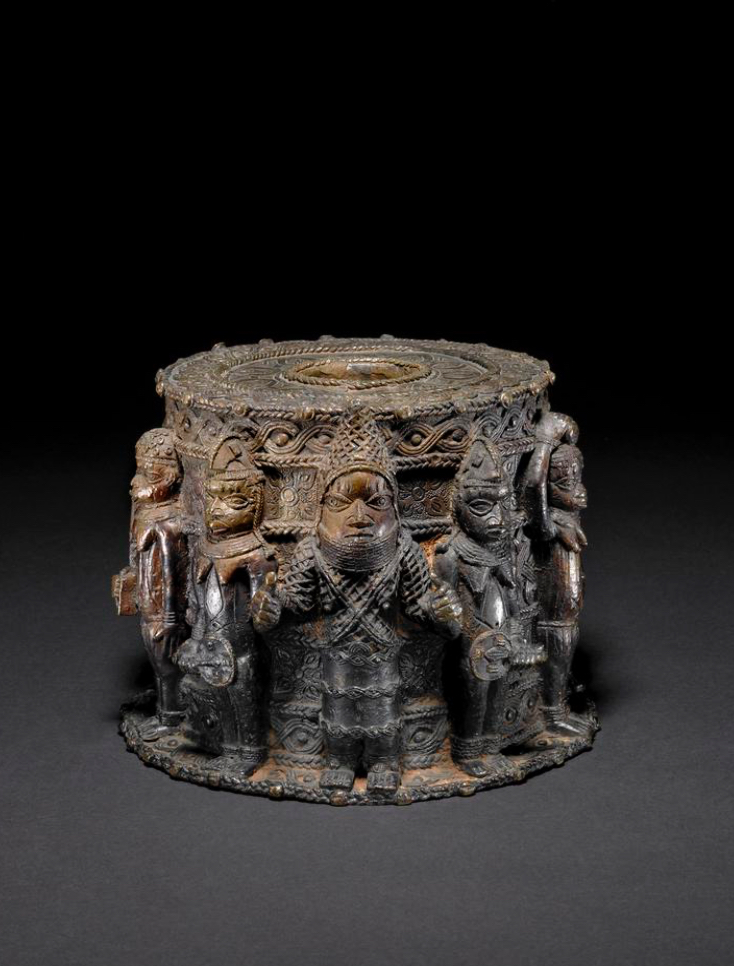
Altar to the Hand (Ikegobo) Benin, Nigeria, 18th century (Africa)
made for the queen
Was made to celebrate accomplishments. A ceremonial altar dedicated to the hands of the kings, symbolizing power and divinity, often adorned with reliefs and sacred objects.
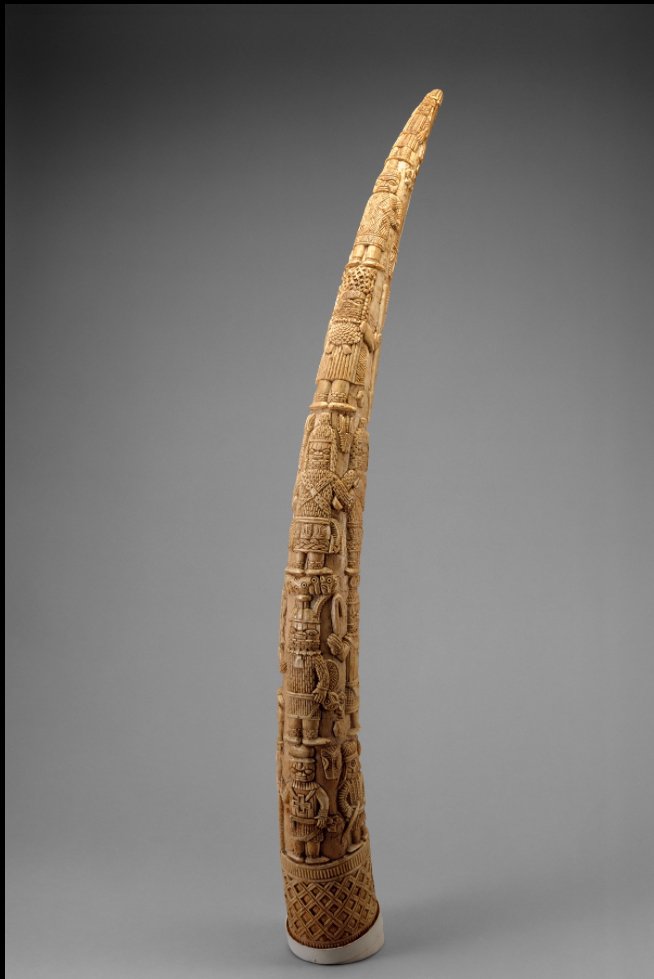
Altar Tusk, Benin, Nigeria, 19th century (Africa)
Compare and contrast the Garima Gospels, Ethiopia 4th-6th centuries CE (Africa) with the Lindisfarne Gospels, 8th century England
The Garima Gospels are among the oldest known Christian manuscripts, showcasing Ethiopian artistry and reflecting the country's unique religious culture, while the Lindisfarne Gospels are renowned for their intricate insular art and illustrations, representing the fusion of Celtic and Christian themes in medieval England. (Knowt)
Canon tables
parallel lists of events in the different Gospel books (kind of like an index)
are illustrated pages that provide a reference guide to the Gospel readings in early Christian manuscripts, facilitating the cross-referencing of biblical texts.
Looting in Benin City
1897
British
Took the bronze and ivory art with them
invasion and suppression of the Benin Kingdom, resulting in significant cultural loss.
Compare and contrast the Oba plaque, Benin, Nigeria, 16th century (Africa) with the Equestrian Statue of Marcus Aurelius (Ancient Rome)
Oba Plaque
smaller proportions, and distortions
Equestrian Statue of Marcus Aurelius
Roman idealism
more lifesized
Both the Oba plaque and the Equestrian Statue of Marcus Aurelius serve as powerful symbols of leadership and authority in their respective cultures. The Oba plaque illustrates the rich history and art of the Benin Kingdom, featuring intricate designs that honor the Oba, while the Equestrian Statue represents Roman imperial power and military success, showcasing realistic details and a strong sense of posture.